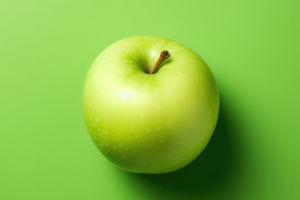Basketball, as a high-paced and dynamic sport, is often seen as a non-contact game.
Yet, it’s common to witness players jostling, blocking, and even bumping into each other during a match.
This raises the question: is any form of contact allowed between players in basketball? The answer is not a simple "yes" or "no," but lies in understanding the context and rules governing different types of contact in the game.
1. Basketball as a Semi-Contact Sport
Basketball is often classified as a "semi-contact" sport. This means that while physical contact between players happens, certain types of contact are regulated and penalized by referees. Unlike sports like football or rugby, where physicality is integral, basketball places emphasis on skill, agility, and finesse rather than brute strength. Contact in basketball is inevitable due to the nature of the sport, but it is carefully controlled to ensure the game remains competitive and safe.
2. Types of Permitted Contact
Although basketball limits aggressive physical interaction, some forms of contact are permissible under the rules. Let's look at what kind of contact is allowed:
- Incidental Contact: This refers to the unavoidable, accidental contact that occurs naturally during the course of the game. For example, two players might brush against each other while chasing the ball or during rebounding. As long as this contact does not impede the opponent’s movement or give the offending player an unfair advantage, it’s generally overlooked by referees.
- Boxing Out: This is a common form of contact during rebounding. Players position their bodies between their opponent and the basket to gain an advantage in retrieving the ball after a missed shot. This is an example of acceptable physical contact, as long as it's not overly aggressive. If a player shoves or pushes their opponent in this situation, it can result in a foul.
- Setting Screens: Another instance where contact is allowed is when a player sets a screen or a pick. A player stands still to block a defender's path, allowing their teammate to get open for a shot or pass. For the screen to be legal, the player setting the screen must be stationary. Moving screens or contact initiated while the player is moving result in an offensive foul.
3. Illegal Contact and Fouls
While some contact is allowed, basketball is strict when it comes to illegal contact, often referred to as a foul. Fouls are classified into different types depending on the nature and severity of the contact:
- Personal Foul: This is the most common type of foul. It occurs when a player makes illegal physical contact with an opponent, which can include pushing, holding, or hitting. For example, if a defender hits the shooter’s arm while trying to block the shot, it's considered a personal foul. Excessive physicality that disrupts the opponent's ability to play the game is penalized.
- Offensive Foul: This type of foul happens when a player on offense makes illegal contact with a defender. A charge, where the offensive player runs into a stationary defender, is one of the most frequent examples of an offensive foul. Offensive fouls often result in the loss of possession for the team committing the foul.
- Flagrant Foul: A flagrant foul is committed when contact is considered excessive or unnecessary. It is often penalized severely, sometimes resulting in the offending player being ejected from the game. Examples include elbowing an opponent in the face or delivering a hard shove that could lead to injury.
- Technical Foul: While not always related to physical contact, a technical foul can also be called for unsportsmanlike conduct, including inappropriate physical actions such as taunting or overly aggressive behavior.
4. The Role of Referees in Controlling Contact
Referees play a crucial role in basketball, ensuring that physical contact does not exceed acceptable levels. They make real-time decisions on whether contact is incidental, allowed, or a foul. With the game’s fast pace, these decisions can be difficult, but referees are trained to balance letting the game flow while ensuring player safety.
Referees are particularly vigilant in protecting players during certain situations, such as:
- Shooting: A player in the act of shooting is granted extra protection. Defenders must avoid contact with the shooter, especially on the arms or hands, as this would directly affect the shot’s outcome.
- Fast Breaks: During fast breaks, where the offensive team is moving quickly down the court, referees are keen to penalize defenders who attempt to disrupt the play by fouling aggressively.
5. Contact in Different Levels of Basketball
It’s important to note that the level of acceptable contact may vary depending on the level of play. For instance, professional basketball leagues such as the NBA or EuroLeague allow for slightly more physical play compared to amateur or youth basketball. At the professional level, players are more experienced and capable of handling a higher degree of physicality without compromising the integrity of the game.
At the youth or high school level, the emphasis is often on skill development, and referees are stricter in enforcing rules that limit contact to prevent injury. Similarly, women’s basketball tends to see less physical contact compared to men’s leagues.
While basketball does involve a degree of physical contact, the sport is governed by clear rules that define what is and isn't allowed. Incidental and strategic contact, like boxing out and setting screens, are integral to the game, but overly aggressive behavior that hinders the opponent’s ability to play results in fouls. The role of referees in controlling contact is key to maintaining the balance between allowing the game to flow and protecting players from injury.
Understanding these nuances is crucial for both players and fans. While contact is an inevitable part of basketball, respect for the rules ensures the sport remains a showcase of skill, strategy, and athleticism rather than brute force.


